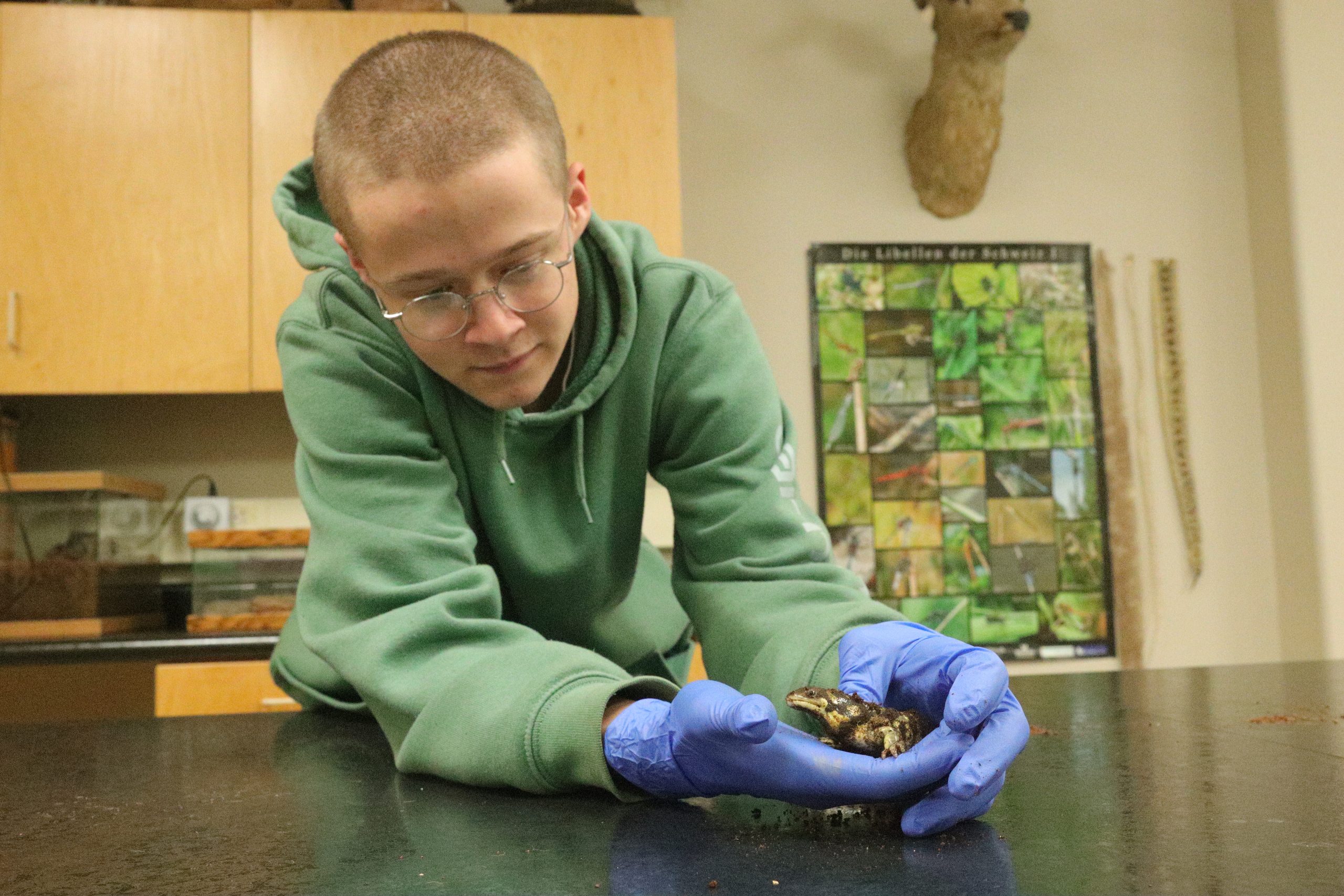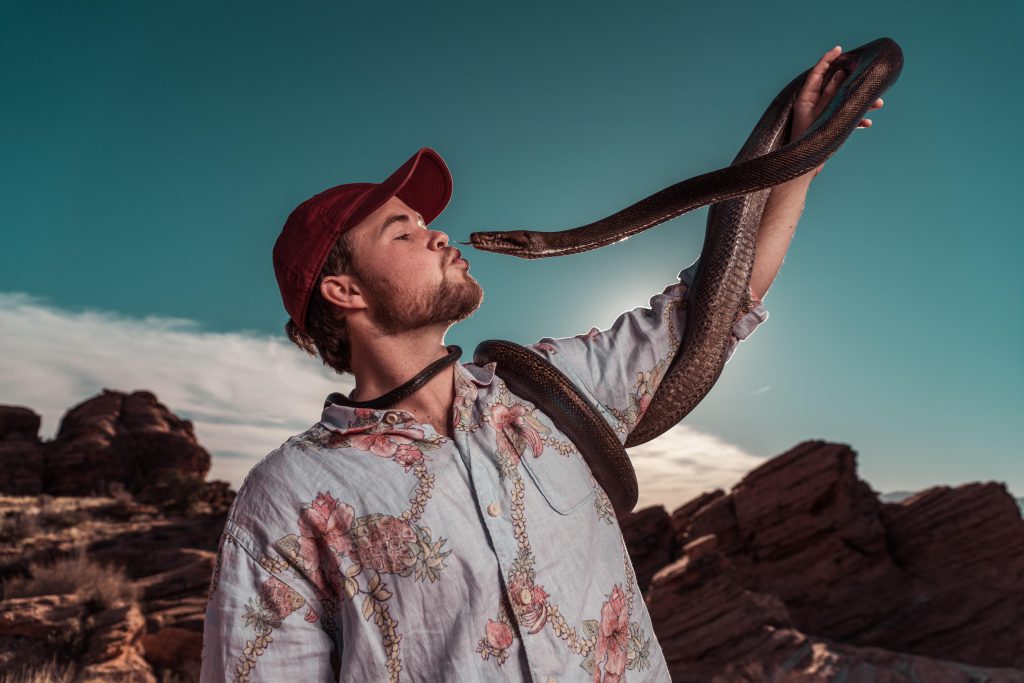Dixie State University is home to lizards, snakes, scorpions, frogs and of course, students.
The animals are part of DSU’s Biology Department Natural Science Museum, which is open for public viewing. When the Science, Engineering, and Technology Building became the new the home for biology, the animals were moved into the Snow Science Building.
Truman Holt, a junior biology major from St. George, said the museum is home to seven snakes, seven frogs, two salamanders, two anoles, an axolotl, and a toad. With those vertebrates, the museum also houses arthropods from cockroaches to scorpions. Dr. Curt Walker also keeps his 35 research frogs in the museum.
The animals in the museum are taken care of by two student caretakers, Holt has been one of the part-time caretakers for about a year and was carefully trained to provide the best care possible.
“Since snakes are ectotherms they don’t have to eat very often,” said Brennan Weaver, a senior biology major from Saratoga Springs. “I feed them every other week and usually every other day make sure their water and tank are clean.”
The museum not only has live animals but many preserved specimens, which include around 20,000 insects, 22,000 plants and 3,000 vertebrate specimens.
Geoffrey Smith, assistant professor of biology, said, “There are specimens that are super old that nobody knows hang out in the museum. It’s as important as the library in terms of the heart of the university, it is such a historical record on local stuff.”
The museum animals are not the only live animals on campus. In certain biology courses, students are expected to care for one specific animal for research and learning throughout the semester. These animals are housed on the third floor of the SET building.
Of all the animals mentioned above, not all are under the curtain of the Institutional Animal Care and Use Committee. Vertebrates and cephalopods are included in the IACUC because of their intelligence. Both uses of animals in classes and in the museum are under the watch of the IACUC.
Geoffrey Smith, assistant professor of biology, said: “If you are talking about the life and death of any animal that can feel pain, you need to make sure that you are doing everything possible to minimize pain and suffering for that creature, and that is why the IACUC is here. Animal research is necessary, so our job is to maximize the welfare of the animals while still allowing research to happen.”
If you are talking about the life and death of any animal that can feel pain, you need to make sure that you are doing everything possible to minimize pain and suffering for that creature, and that is why the IACUC is here.
Geoffrey Smith
The IACUC is very open about the work that they do. They follow and ensure students are following guidelines for best practices regarding animal use, review experiment designs, provide opinions on animal care, and work directly with the Institutional Review Board on campus. The committee consists of professors and veterinarians on-campus and remotely, said, Curt Walker, professor of biology.
A few years after coming to Dixie State University, Smith pushed to create the IACUC, which allows him to conduct the research he does on lizards.
The animals on campus are limited to ectotherms, which include lizards, snakes, frogs and fish. Expanding to mammals on campus would add more expensive, special housing and extra care.
Walker said: “The live animals are essential for courses like animal behavior and comparative physiology, as dead animals don’t have behavior or physiology. Computer models don’t capture the true nature of these processes well.”
Students interested in working with live animals can look into the following courses: herpetology, ichthyology, animal behavior and comparative vertebrate physiology.
“I expect many more research opportunities in the future,” Smith said. “We are a special institution because we are right above the Arizona strip and that is a really unstudied, cool part of the United States.”




